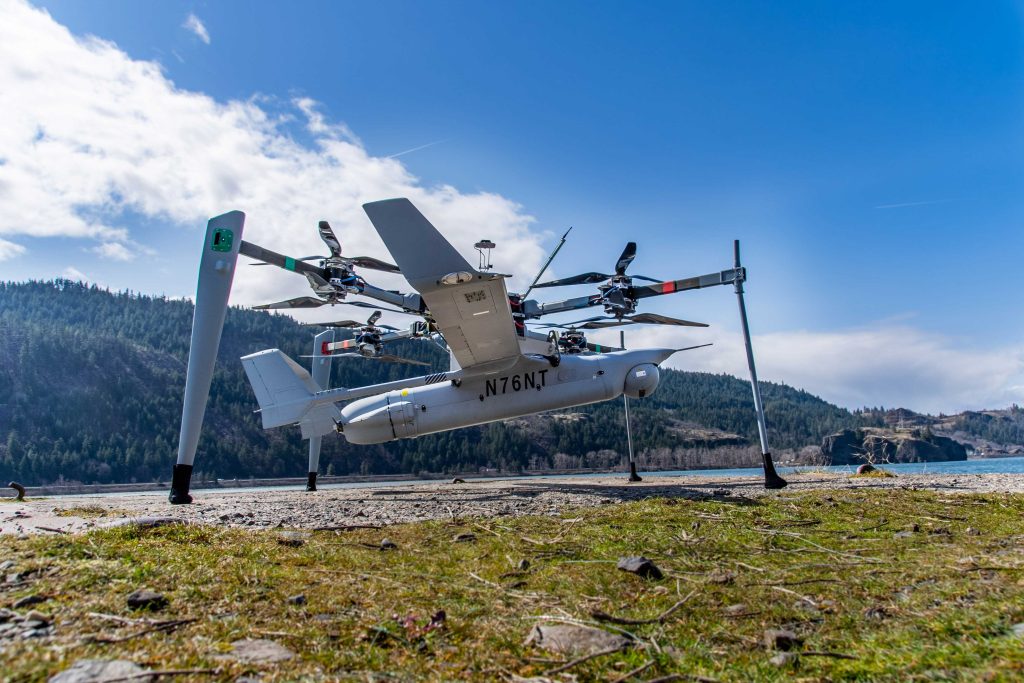
Insitu Announces its High Seas, Long Endurance Integrator VTOL Uncrewed Aircraft System at Navy League’s Sea-Air-Space Global Maritime Expo
BINGEN, Wash – April 3, 2023 – Insitu, A Boeing Company,
today announced its Integrator Vertical Take-off and Landing (VTOL) uncrewed aircraft system (UAS) at Navy League’s Sea-Air-Space Exhibition in National Harbor, Maryland.
Integrator VTOL launches vertically on ships or land without sacrificing payload capacity or endurance. The system retains the performance of fixed-wing aircraft, providing the same long range wide-area surveillance capability for extended periods.
Integrator VTOL is uniquely designed to operate as a portable system in tight quarters, such as ship decks, and in challenging maritime conditions with high seas and gusty winds. No stationary launch and recovery equipment is required – providing expeditionary (ship-to-ship, ship-to-land) portability and modularity across both UAS hardware and payloads while minimizing impact to other flight operations.
With greater than 16 hours of endurance carrying 40 lbs. of best-in-class, modular payloads, the unique design offers three-times improvement in range and endurance over hybrid-VTOLs. It also has a significant improvement over tail-sitters in its ability to fly on and off ships in rough seas where ship roll and motion present major issues for tall and narrow base tail-sitter UAS.
“Integrator VTOL is a no-compromise uncrewed aircraft system,” said Diane Rose, Insitu president and CEO. “Customers can finally have it all: vertical launch and recovery with industry-leading payload capacity and endurance for their most critical missions, even in the most extreme maritime environments and sea states, without sacrificing valuable transport, deck, or hangar space.”
The system has two parts: FLARES (Flying Launch and Recovery System) developed by Hood Tech, and the Insitu Integrator air vehicle. Requiring no modifications to the aircraft, FLARES performs normal operations at half throttle, allowing significant control authority to withstand gusts, lower density air and higher ship deck motion.
To deploy, FLARES engages Integrator and climbs into the sky. Once it reaches its desired altitude, FLARES dashes forward before releasing Integrator, allowing Integrator to perform its long range, wide-area surveillance mission for extended durations. Once Integrator is released, FLARES returns to a ship’s deck or land to await Integrator’s return.
As Integrator approaches at the end of its mission, FLARES again climbs into the sky with a recovery rope attached and performs Insitu’s well-proven maritime retrieval method. FLARES then lowers Integrator to the ship’s deck or the landing area to complete the mission.
About Insitu
With offices in the U.S., U.K., and Australia, Insitu creates and supports uncrewed systems and software technology that deliver end-to-end solutions for collecting, processing and managing sensor data. To date, our systems have accumulated more than 1.3 million flight hours.
Contact
Pat Host, Insitu Communications Specialist
patrick.host@insitu.com | 202-856-4396
More news
Insitu, GKN Aerospace and TNO Team Up to Develop Advanced Radar System for Integrator
October 05, 2021Read more
Recent News
Insitu Sets Company Record for Longest Flight at 25.5 hours with its Integrator Uncrewed Aircraft System
Insitu, A Boeing Company, recently set a company record for the longest duration flight with a 25.5-hour sortie with its Integrator Uncrewed Aircraft System (UAS) on an operational mission.
Read More »Manned/Unmanned teaming made safer with Naval Aviation’s new avoidance tech
Air vehicle operators from Unmanned Air Test and Evaluation Squadron (UX) 24 flew two RQ-21 Blackjacks toward each other while Guardian operators monitored screens…
Read More »Successful Liquid Hydrogen Fuel Cell Test
Insitu together with a research team from Washington State University demonstrated for the first time the use of a unique refueling system for powering Unmanned Aerial Vehicles (UAVs) using liquid hydrogen.
Read More »